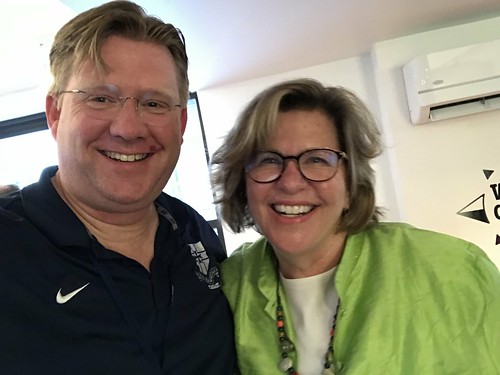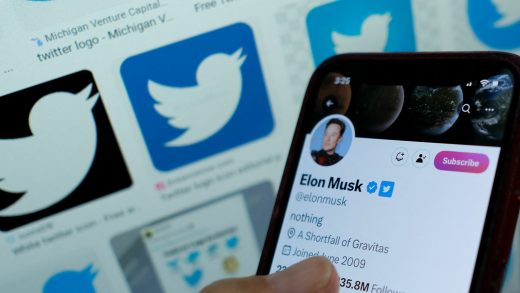Whew! This week I’m attending the 2019 Summer Institute in Digital Literacy (#digiURI) in Providence, Rhode Island, and it’s been a wonderful whirlwind of learning so far. A few years ago, as my use of Twitter increased, I stopped documenting my learning from conferences and other professional development events on my blog via separate posts. Instead, I started primarily using Twitter. (@wfryer) Twitter allows me to not only archive ideas, links, and inspiring moments from a conference, but also amplify them for a wider audience. One challenge of this approach, however, is that individual tweets as well as collections of tweets about a specific session or topic can be lost in the “sea of content” which is Twitter and a prolific Twitter channel like mine.
For a few years, I used the third-party website Storify to create discrete archives of my tweets from different presentations or events. I loved how Storify not only let me archive my own tweets, but also tweets from others and let users embed a complete archive of tweets on another website, like a WordPress blog. Unfortunately, however, Storify died and went to the “web 2.0 graveyard” in May 2018.
After the death of Storify as I searched for a replacement, I discovered Twitter Moments. Like Storify, Twitter Moments let users archive tweets from their channel or tweets shared by others. Unfortunately, however, Twitter Moments are not as robust as Storify, so there are limits (apparently undefined, but none-the-less real) as to how many past tweets you can directly browse to and archive. Tonight I was planning to create a single Twitter Moment for my first two days of learning at #digiURI, but I wasn’t able to. Instead, I created separate Twitter moments capturing the learning I’ve experienced and documented from different people here at the Institute. Use these links to view them:
- Learning and takeaways from Renee Hobbs (@reneehobbs)
- Learning and takeaways from Julie Coiro (@jcoiro)
- Learning and takeaways from Kristin Ziemke (@KristinZiemke) *
- Learning and takeaways from Dave Quinn (@EduQuinn)
- Learning and takeaways from Troy Hicks (@hickstro)
- Learning and takeaways from Kristin Hokanson (@khokanson)
- Learning and takeaways from Brian Turnbaugh (@wegotwits)
- Miscellaneous Learning & Takeaways from #digiURI 2019
These seven Twitter Moments capture most of my documented learning from the past 3 days (including my travel day to the conference) but don’t yet include tweets referencing Kristin Ziemke (@KristinZiemke). Kristin is our keynote speaker on Wednesday, so I’ll wait till later to collect all my learning from her in a separate “moment.” * (Update: I added a link above to my Twitter Moment for Kristin following her morning sessions Wednesday.)
The number of tweets I’m trying to archive and organize from the conference so far is a bit overwhelming, and the Institute is not quite half over. However, I feel like I need to work on this archiving and sharing process, because I may not be able to make enough time for it after our week is finished and because I suspect it will be easier to do this in stages.
For several years, I’ve used a personal installation of the PHP script Tweet Nest (twitter.wesfryer.com) to archive all my Tweets in a personal, searchable website. Tweet Nest shows my lack of tweets the first two weeks of the month (when I was mostly offline, camping with our family in Colorado) as well as the high volume of Tweets the past three days. Combined, I’ve shared 239 Tweets the past 3 days. That’s quite a few, and may be a personal record.
“July 2019 Tweets by @wfryer” (CC BY 2.0) by Wesley Fryer
There are SO MANY great ideas, web tools, pedagogical concepts, and resources that have been shared so far at the Summer Institute in Digital Literacy, that I certainly can’t do an adequate job in this post tonight summarizing them. Yet, isn’t this situation in many ways a reflection of the broader information environment in which we live? We’re awash in information, so our challenge is how to effectively FILTER and process “the good stuff” among so many choices. (That was, incidentally, a key theme of my April 2019 ATLIS Conference workshop, “Filtering the ExoFlood: Strategies for Media and Information Literacy.”) So, in addition to inviting and encouraging you to check out the Twitter Moments linked above from the Institute, here’s a list (in no particular order) of some key takeaways I’ve had from the week so far:
- The Knight Foundation’s web tools are powerful and amazing: Timeline, StoryMap, Juxtapose. (h/t @hickstro)
- This clever media literacy lesson on memes is one I’ll likely use next year with my 5th and 6th grade computer class students. (h/t Dolores Flamiano & David Pallant)
- I will be spending several hours exploring and enjoying the 2012 multimedia article from the New York Times, “Snow Fall: The Avalanche at Tunnel Creek.” (h/t @hickstro)
- I will likely use the Media Education Lab’s Propaganda Database to help my 6th graders study and better understand propaganda from a variety of perspectives, as well as the provided curriculum for teachers. (h/t @reneehobbs)
- I may propose teaching a MSON course for 2020-21 for my school on “The Weaponization of Social Media” with a specific focus on Russian disinformation, propaganda and information warfare. (h/t @wegotwits)
- I’m definitely going to to use the Desmos Activity Builder (free!) to teach interactive lessons with my students next year. (h/t @EduQuinn)
- I can’t wait to order, read, and share Julie Coiro, Beth Dobler and Karen Pelekis’ forthcoming book, “From Curiosity to Deep Learning: Personal Digital Inquiry in Grades, K–5.” (h/t @jcoiro)
There are many more ideas I’m eager to share with teachers back at my school as I serve as an instructional / pedagogical coach next year, as well as use with my own students in my computer classes. Stay tuned and keep following the #digiURI hashtag to learn more this week!

“Renee Hobbs (@reneehobbs) and Wes Fryer” (CC BY 2.0) by Wesley Fryer
If you enjoyed this post and found it useful, consider subscribing to Wes’ free, weekly newsletter. Generally Wes shares a new edition on Monday mornings, and it includes a TIP, a TOOL, a TEXT (article to read) and a TUTORIAL video. You can also check out past editions of Wes’ newsletter online free!
Did you know Wes has published several eBooks and “eBook singles?” 1 of them is available free! Check them out! Also visit Wes’ subscription-based tutorial VIDEO library supporting technology integrating teachers worldwide!
MORE WAYS TO LEARN WITH WES: Do you use a smartphone or tablet? Subscribe to Wes’ free magazine “iReading” on Flipboard! Follow Dr. Wesley Fryer on Twitter (@wfryer), Facebook and Google+. Also “like” Wes’ Facebook page for “Speed of Creativity Learning”. Don’t miss Wesley’s latest technology integration project, “Show With Media: What Do You Want to CREATE Today?”
Source : Summarizing Summer Institute in Digital Literacy Learning via Twitter Moments












